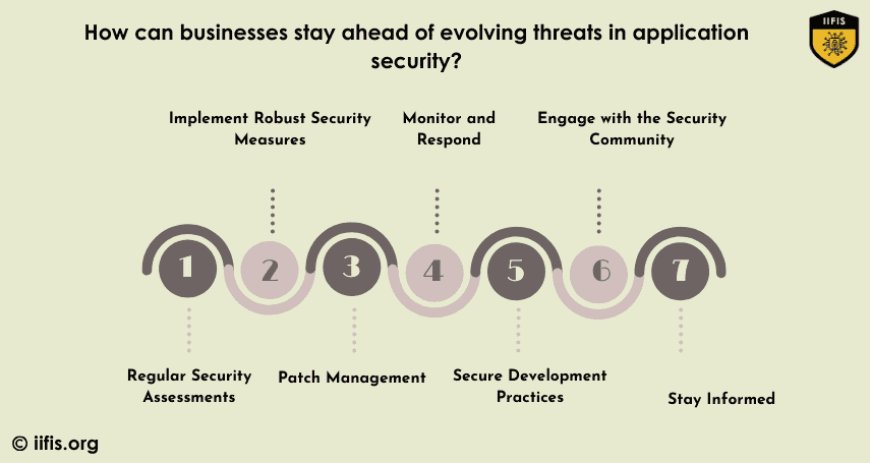Practical Examples of Application Security Challenges
Explore practical examples of application security challenges to fortify your digital defenses. Understand threats and solutions.

Application Security Threats are similar to smart hackers trying to break into your computer programs and wreak damage. Attackers can manipulate databases and steal confidential information by inserting harmful code into programs through injection attacks. In the same way, cross-site scripting (XSS) inserts malicious scripts into websites to enable the theft of important data. Unaware users can be tricked into performing unwanted requests by cross-site request forgery (CSRF), and security errors can unintentionally leave bugs open to attack.
In Application Security, failed identification makes the defenses weaker by giving hackers access to login information and session hijacking. Personal information is in danger of theft when sensitive data is exposed, and internal data can be accessed without authorization when there are insecure clear references. In addition, security by obscurity creates a misleading impression of protection by hiding flaws that astute attackers can quickly take advantage of. Developers may improve their defenses and protect their applications from attackers by understanding these dangers.
Discuss common vulnerabilities that make applications susceptible to attacks
-
Injection Flaws: These look like underground passageways kept hidden. To change databases or perform unwanted actions, attackers usually insert malicious code into your application through forms or URLs.
-
Broken Authentication: It would be the same as having a front gate with a basic lock. Weak protocols for authentication make it simple for attackers to take over sessions, steal login information, and enter protected regions without permission.
-
Sensitive Data Exposure: It's similar to leaving valuables unguarded. Attackers can readily steal confidential data, such as passwords or bank account information, from applications that fail to properly protect or secure it.
-
Security Misconfiguration: Consider not locking the back door. Attackers can get unauthorized access to system resources by taking advantage of gaps in default configurations or incorrect settings.
-
Cross-Site Scripting (XSS): This resembles spray-painted artwork on the walls. To steal cookies, and session tokens, or send users to unsafe websites, attackers insert harmful code into other users' web pages.
-
Broken Access Control: As if everyone were given a master key. Attackers may bypass permission procedures and get unauthorized access to limited regions or functionality by implementing limits on access poorly.
-
Insufficient Logging & Monitoring: Imagine a world without patrols watching the walls. Attackers can remain unknown if sufficient recording and monitoring aren't in place, which makes it challenging for defenders to identify and address security events.
-
Insecure Deserialization: It's similar to accepting enigmatic packages without opening them. By taking advantage of flaws in the decoding procedure, attackers can manipulate data or execute arbitrary code using insecure conversion issues.
-
Using Components with Known Vulnerabilities: It's identical to a building with defective stones. Risks that are known to exist in third-party components or libraries are introduced into your application and can be used by attackers to obtain access or initiate attacks.
-
Security Through Obscurity: It's similar to keeping your fortress's map hidden. Your application becomes more susceptible to attackers who can quickly find and take advantage of concealed weaknesses if you rely only on secrecy rather than putting robust security measures in place.
How can businesses stay ahead of evolving threats in application security?
Regular Security Assessments:
-
Businesses ought to regularly assess their application security, much like you would when you examine your house for weak points. Find and fix any possible dangers, this entails carrying out thorough audits and risk assessments.
Stay Informed:
-
It's important to keep informed of the most recent developments and security dangers. Companies should always be learning about new risks and application security best practices for both themselves and their staff.
Implement Robust Security Measures:
-
Creating robust defenses is important. To prevent unwanted access and data theft, businesses should deploy strong security features like encryption, multi-factor authentication, and access limits on their applications.
Patch Management:
-
It's important to keep systems and software updated with the latest security updates. Businesses should quickly implement fixes and improvements to address known vulnerabilities and improve their defenses, much like they would when repairing a leak in a boat.
Secure Development Practices:
-
Security should be integrated into the development process at every level by businesses. This includes carrying out secure code reviews, putting security testing techniques into practice, and promoting engineers to be security-aware.
Monitor and Respond:
-
Always keeping a close eye on application security is crucial. Strong monitoring solutions should be used by businesses to identify suspicious activity and react quickly to security breaches.
Engage with the Security Community:
-
In the field of application security, cooperation is important. To keep updated and share insights on developing risks, businesses should actively participate in information-sharing forums, interact with peers, and connect with the security community.
Continuous Improvement:
-
The process of application security is never-ending. To make sure their defenses continue to be effective over time, businesses should regularly assess and improve their security posture, making adjustments for new dangers and developing technology.

Importance of Application Security
-
Protecting Sensitive Data:
Application security protects sensitive data, including financial information, personal information, and intellectual property, from getting into the wrong hands, much like a safeguard that keeps your most valuable possessions safe. This data may be taken if proper safety measures aren't taken, which could have adverse impacts on both persons and companies.
-
Maintaining Customer Trust:
Customers trust that your apps will protect their personal information when they use them. By protecting their data and verifying that their privacy is respected, application security contributes to the maintenance of this confidence. This trust can be damaged by a security breach, which could result in lost revenue and harm to one's reputation.
-
Preventing Financial Loss:
Businesses may suffer large financial losses as a result of security theft, including expenses for data recovery, fines from regulatory bodies, legal bills, and harm to the reputation of their brands. Businesses can reduce these risks and the expensive cost of a breach by investing in application security.
-
Compliance with Regulations:
Important regulations about the security of sensitive data apply to several businesses. Application security implements protections to prevent unwanted access and preserve data privacy, which helps firms comply with these standards. Penalties and legal repercussions may follow compliance with these regulations.
-
Maintaining Business Continuity:
Security lapses can cause operational disruptions for businesses, resulting in lost time, lower revenue, and strained client relations. By avoiding disruptions from safety problems and maintaining that applications continue to be accessible and functional, application security helps the preservation of business continuity.
-
Adapting to Evolving Threats:
New risks are always appearing, and the online environment is always changing. Application security employs proactive strategies to find and fix weaknesses before attackers can make use of them, helping organizations maintain in advance of these risks. Maintaining a competitive edge over fraudsters and safeguarding against new risks requires this flexibility.
Application security requires ongoing attention, education, and proactive steps from businesses instead of being a one-time event. Organizations can protect sensitive information, uphold consumer confidence, avoid financial losses, conform to regulatory requirements, guarantee business continuity, and successfully respond to new dangers by understanding common dangers, putting strong defenses in place, and developing a security culture. By following these guidelines, companies may maintain their competitive edge in the rapidly changing cybersecurity market while protecting their brand and assets in the ever-changing digital environment.























